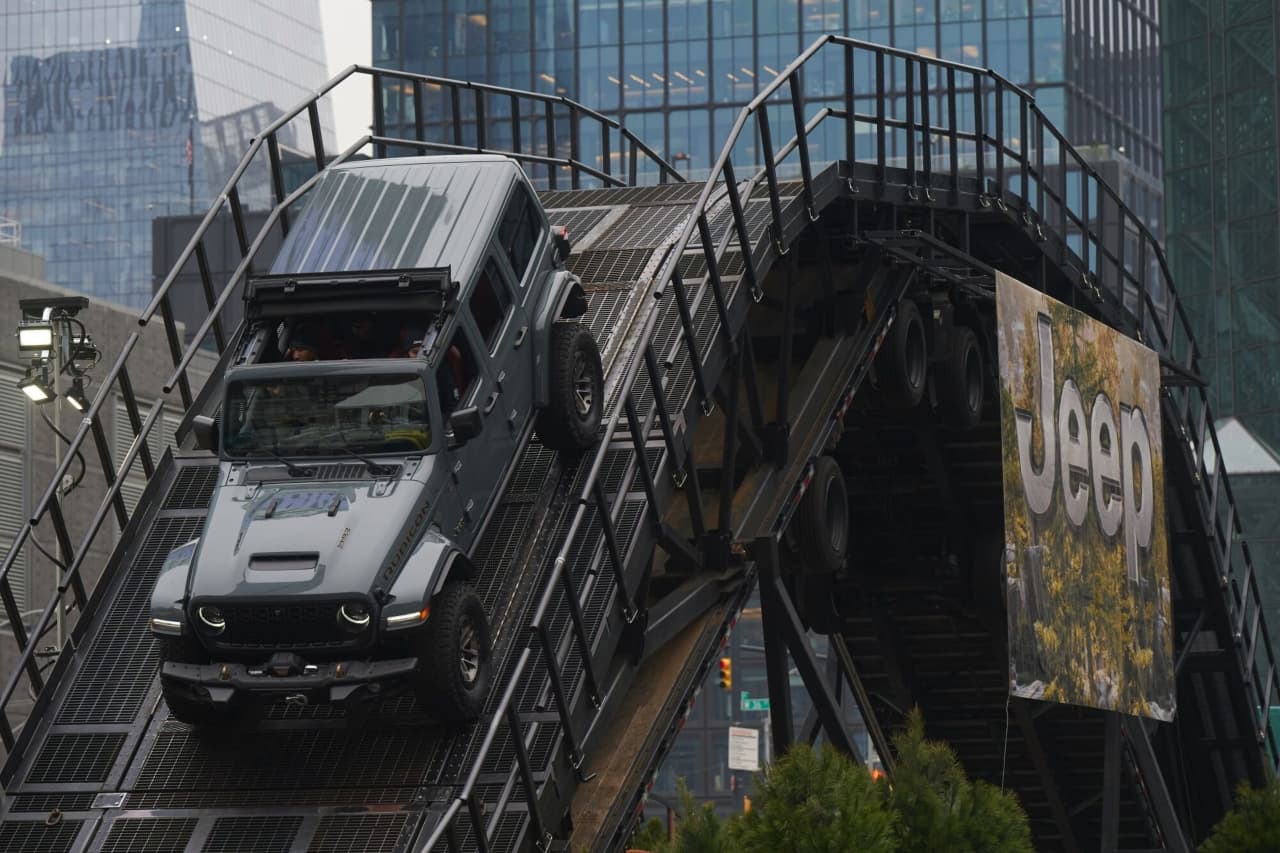
JEEP CUTS OUTPUT OF WRANGLERS AND GRAND CHEROKEES
Jeep’s parent company has pressed pause on making two of its top-selling U.S. models.
Factories temporarily stopped producing the Jeep Wrangler and Grand Cherokee sport-utility vehicles in the past week, people familiar with the matter said. Those models were among Jeep’s bestsellers through the first half of the year.
In a statement, Jeep’s parent, Stellantis, late Wednesday confirmed “production adjustments” at two Detroit assembly plants that make the Grand Cherokee, and another factory in Toledo, Ohio, where the Wrangler is produced. How many days the facilities have been idled couldn’t be determined.
The production cuts come as Stellantis grapples with some of the industry’s highest inventory levels and as sales have sagged, triggering complaints from dealers.
“Stellantis continues to take the necessary actions to improve operations in the U.S. market,” the company said. “The company will continue to monitor the situation to assess whether further action is required.”
A company spokesperson said the plants would be producing vehicles Thursday.
For months, dealers and Wall Street analysts have blamed Stellantis’s bloated stocks on higher prices and fewer promotions than from rivals. Some retailers complained that they have had trouble drumming up business after being left with larger numbers of pricey or outdated models of cars and trucks.
The trans-Atlantic carmaker, formed by the 2021 merger of Fiat Chrysler Automobiles and PSA Group, has seen its sales and market share slip as efforts to reduce its stock of cars and trucks in the U.S. have proved unsuccessful.
Under Stellantis Chief Executive Carlos Tavares, the company early on logged record profits and margins, helped by tight vehicle availability in the wake of the pandemic. U.S. dealers have said the company didn’t adjust quickly enough as the market got back to normal and rivals began offering more-generous deals.
Tavares has stressed the importance of maintaining healthy profit margins and controlling costs as the company directs large investments toward electric vehicles.
Stellantis executives told analysts in July that the company would consider trimming vehicle production and reducing prices to clear more vehicles from dealership lots.
RBC Capital analysts last month called the continued high inventory levels concerning and unexpected, after earlier assurances from Stellantis executives that the company was making progress whittling down excessive levels.
Jeep and Dodge brands entered August with more than a four-month supply of vehicles, compared with the 68-day industry average, according to Cox Automotive. Ram had more than twice the industry average supply.
Stellantis’s vehicle sales in the U.S. were down 21% through the first six months of the year, compared with a small increase in the broader auto industry.
The company shed 2 percentage points of market share over that stretch, according to Cox data, a significant drop in an industry in which fractions of a point of lost share can spark investor worries.
U.S.-traded shares of the company have tumbled around 35% in the past six months.
Write to Ben Glickman at [email protected]
2024-09-05T00:25:29Z dg43tfdfdgfd